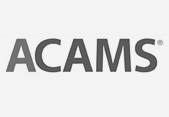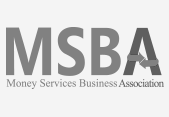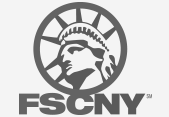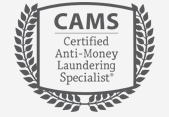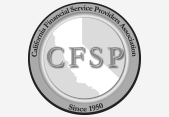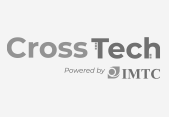For Money Services Businesses (MSBs), check cashing services are a vital way to serve underbanked communities and provide fast access to funds, but they also come with serious risks and red flags that can signal fraud, money laundering, or terrorist financing.
To protect your business and ensure compliance with federal regulations, your staff must be trained to recognize red flags and take the appropriate action. It is essential to be aware of common fraud schemes, how illegal financial activities manifest in MSBs, and what employees should do when they encounter something suspicious.
Common Fraud Tactics in Check Cashing
Counterfeit or Altered Checks
Fraudsters may present fake payroll, tax refund, or business checks that appear legitimate.
Red Flag Behavior:
- Low-quality paper or inconsistent fonts
- Unusual routing numbers or missing security features
- The customer is vague about the check’s origin
Example: A customer presents a check that appears to come from a local employer, but the company’s website and phone number can’t be verified.
Stolen or Fake Identification
Customers may attempt to cash checks using fraudulent or stolen IDs.
Red Flag Behavior:
- Nervousness or evasive answers
- The ID photo doesn’t match the presenter
- The customer provides minimal or inconsistent details
Example: A person attempts to cash a check using a high-quality fake ID, but hesitates when asked to confirm their address or employer.
Third-Party or Endorsed Checks
Cashing checks that are signed over to someone else is a high-risk activity, especially when done in bulk.
Red Flag Behavior:
- Multiple checks from unrelated third parties
- Inconsistent handwriting or signatures
- High volume of endorsed checks over time
Example: A young customer brings in five checks, each made out to a different person, all endorsed to him and drawn from the same business account.
Understanding Structuring, Layering & Smurfing
There are three core money laundering techniques that criminals may use to hide illicit funds using MSBs: structuring, layering, and smurfing.
Structuring
Breaking up transactions to avoid mandatory reporting, like cashing checks for $9,900 instead of $10,000 to evade Currency Transaction Reports (CTRs).
Red Flag Behavior:
- Repeated transactions just under $10,000
- Attempts to split one check into smaller ones
- Asking about reporting thresholds
Example: A customer cashes $9,500 checks every few days, despite receiving payroll bi-weekly.
Layering
This process involves obscuring the source of funds by creating complex, layered transactions.
Red Flag Behavior:
- Unexplained conversion of funds into other instruments
- Multiple different services are used in rapid succession
- Transactions inconsistent with the customer profile
Example: A customer cashes a check and then quickly purchases prepaid cards, sends wire transfers, or buys money orders in large amounts.
Smurfing
Using multiple people (or “smurfs”) to conduct small transactions on behalf of a larger laundering operation.
Red Flag Behavior:
- Unusual coordination between customers
- Similar transaction types and timing
- Individuals seem coached or unfamiliar with their own transaction details
Example: Three unrelated individuals each cash checks from the same business within an hour, all under the $10,000 threshold.
What to Do if a Red Flag is Detected
It’s not enough to notice suspicious behavior. Staff must know how to respond.
Step 1: Assess
Determine if the transaction:
- Involves more than $10,000 in cash
- Involves criminal or deceptive behavior
- Appears to structure or conceal the true origin of funds
Step 2: Escalate
Your employees should:
- Alert the Compliance Officer or manager immediately
- Never confront the customer or disclose suspicions
Document everything, including:
- Details of the transaction
- Customer behavior
- Copies of checks and IDs
- Time, date, and staff involved
Step 3: Report
File reports through the FinCEN BSA E-Filing System.
Currency Transaction Report (CTR)
- Required when cash transactions exceed $10,000 in one day.
- Must be filed within 15 days.
Suspicious Activity Report (SAR)
- Must be filed within 30 days of detection
- File when suspicious activity is observed
- Structuring
- Fraud or forged checks
- Money laundering or terrorist financing
- Transactions inconsistent with customer behavior
Confidentiality Reminder
Never inform a customer that a SAR or CTR has been or will be filed. This is called “tipping off” and is a federal offense under the Bank Secrecy Act (BSA).
Final Tips for MSBs
- Train your team regularly on identifying red flags, proper ID verification procedures, and escalation protocols.
- Review transaction patterns weekly to spot structuring or layering trends.
- Use technology (like transaction monitoring tools) to help flag high-risk behavior automatically.
- Update your internal policies annually to reflect current AML/CFT and compliance expectations.
Protect Your Business & Your Customers
Your MSB is more than a service provider, it’s a gatekeeper against fraud and criminal activity. Empowering your staff with the knowledge to identify and report red flags protects your community, preserves your reputation, and ensures full compliance with federal law.
If you’d like help developing your training program, compliance procedures, or a fully compliant check cashing system, our team is here to assist you.
Tags: AML/CFT, Check Cashers, Check Cashing, Check Cashing Technology, CTR, Currency Transaction Report, Employee Training, Financial Crimes Enforcement Network, FinCEN, Money Services Business, MSB, Red Flags, SAR, Suspicious Activity Report





